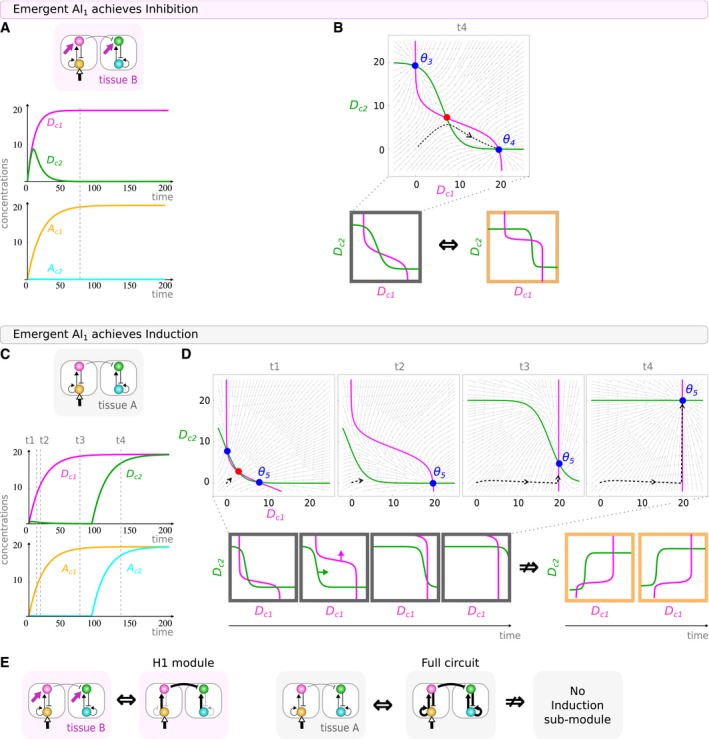For
circuit with parameters (
w
A = −0.05,
w
B = −7.98,
w
C = 6.47,
w
D = 9.61,
α
A = 6.40,
α
D = 6.81), we follow how concentrations of the four species (
D
c1,
A
c1,
D
c2,
A
c2) evolve in time as emergent circuit
Activation‐Inhibition AI
1 achieves (A, B) inhibition or (C, D) induction. In (B), we see how the phase portrait of
AI
1 (gray box) is equivalent to that of the mono‐functional inhibition circuits (orange box). (D) The lateral induction pattern results from a
pursuit behavior (Verd
et al,
2014,
2017) where the horizontal then vertical movement of the attractor
θ
5 deviates the trajectory which exhibits a sudden change in direction. This dynamic (gray boxes) is not equivalent to the dynamics seen in the minimal lateral induction circuits (orange boxes).

